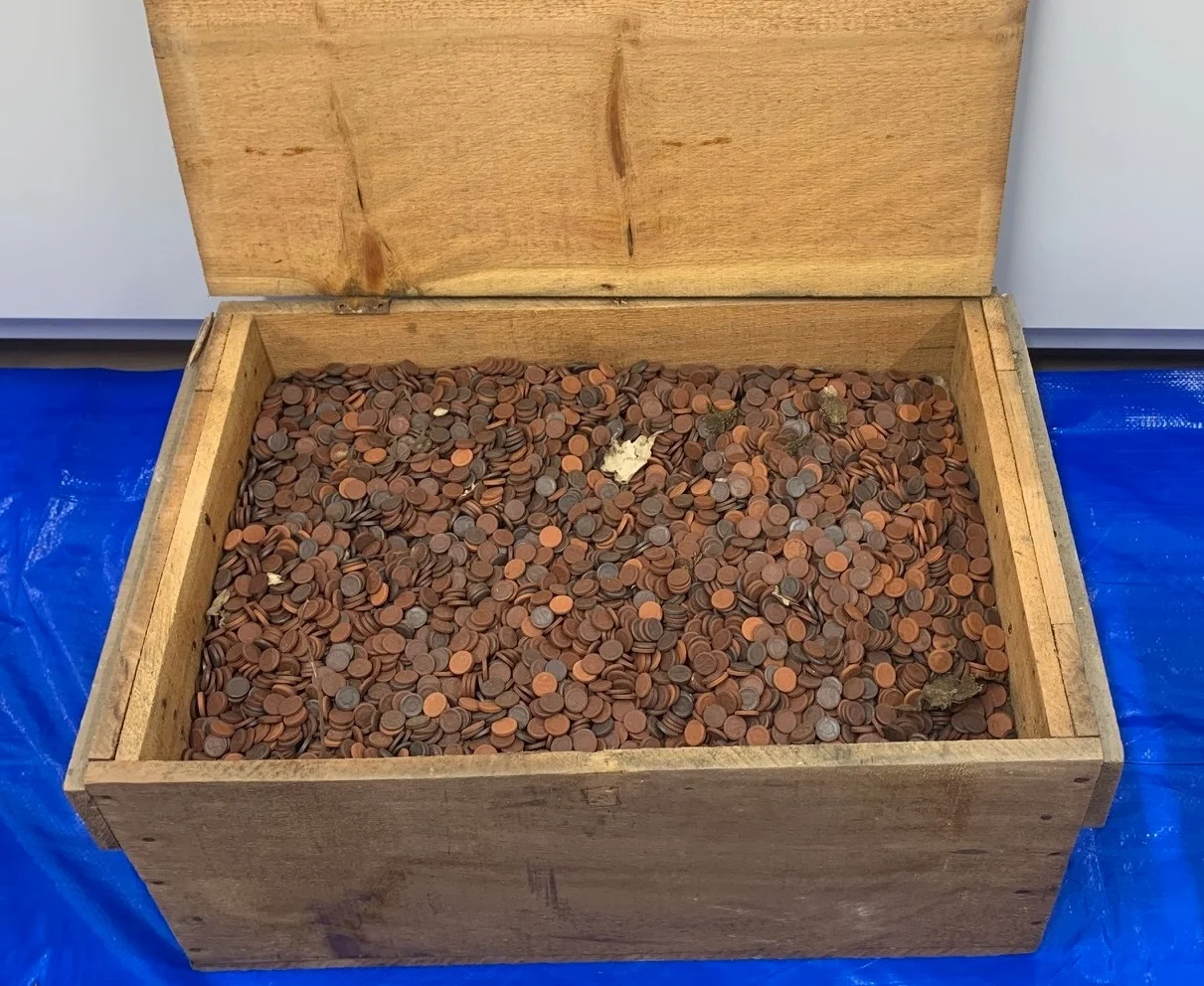Wooden boxes containing over 500,000 Maboroshi “phantom” coins have been discovered in a warehouse formerly occupied by Shofu Kogyo Co Ltd.
Shofu Kogyo Co Ltd produced ceramic coins during a period of metal shortages on the Pacific home front during WWII.
Metal sources were redirected for the production of munitions, requiring an alternative source of currency to ensure internal trade and purchase of goods/services.
Over 15 million coins were manufactured at factories in Kyoto, Seto, and Arita, which were mostly destroyed following the Japanese surrender and occupation by American forces.
The coins, which are in denominations of a single “sen” (1 sen = 1/100 of a yen), have a diameter of 15 millimetres with one side decorated with a depiction of Mount Fuji, and the other side with cherry blossoms.

According to the Japan Mint, 15 boxes were recovered, containing over 500,000 coins either loose of packed in bags, which have been officially handed over to the Mint Bureau for further investigation.
“We hope that the recent discovery of so many ceramic coins will lead to new discoveries about the circumstances surrounding currency manufacturing at the end of the Pacific War,” said the Independent Administrative Institution Japan Mint Bureau.
“We intend to carry out a detailed examination, comparing them with materials preserved in the Mint’s collection. We hope this will provide greater insight into the manufacturing conditions of the period.”
To express their gratitude to Shofu Co Ltd who discovered the coins, the company has been issued with a formal letter of appreciation by Kenji Goto, Chairman of the Japan Mint Bureau, and a donation of 100 ceramic coins.
Header Image Credit : Japan Mint
Sources : Japan Mint







